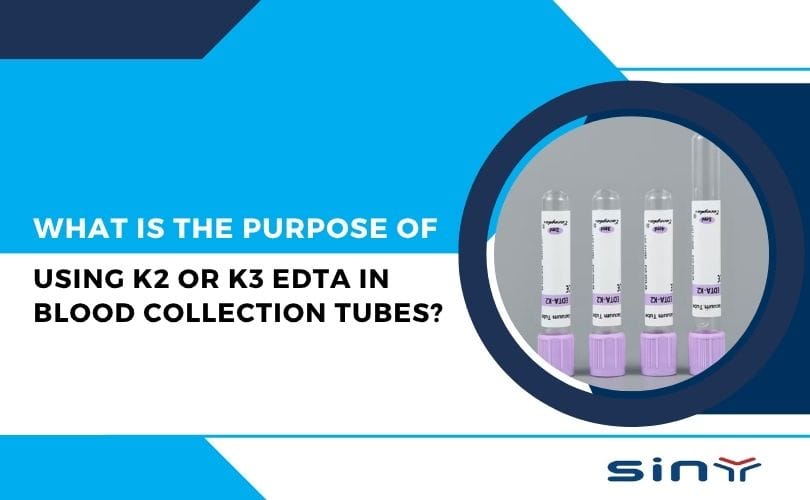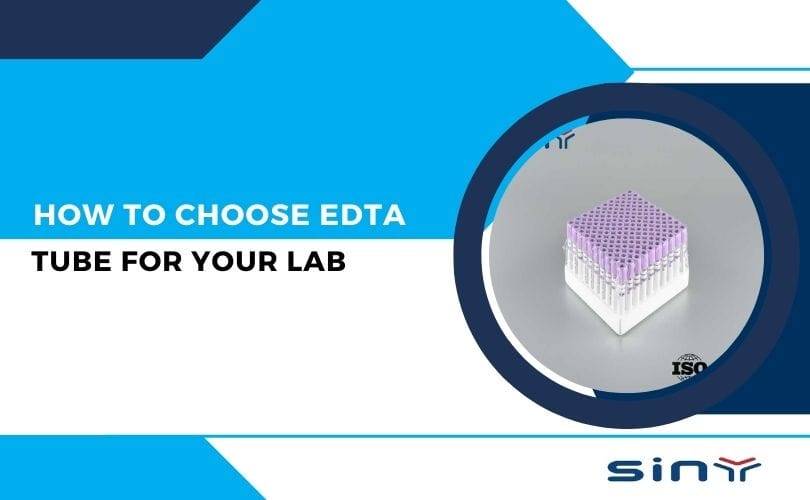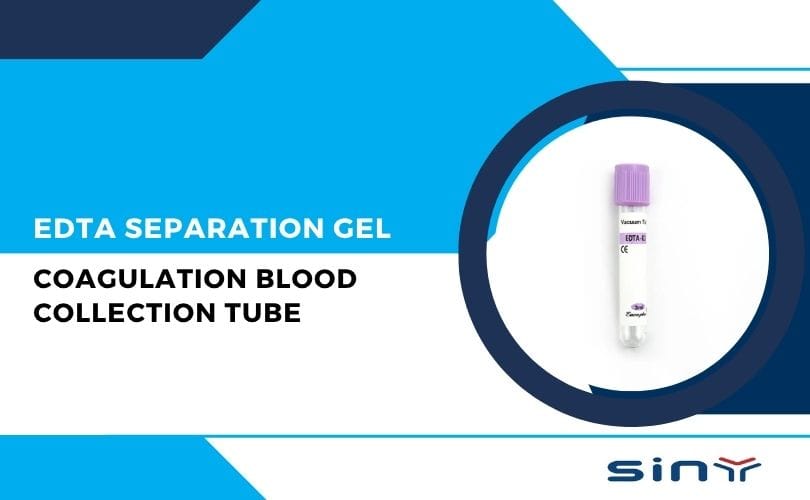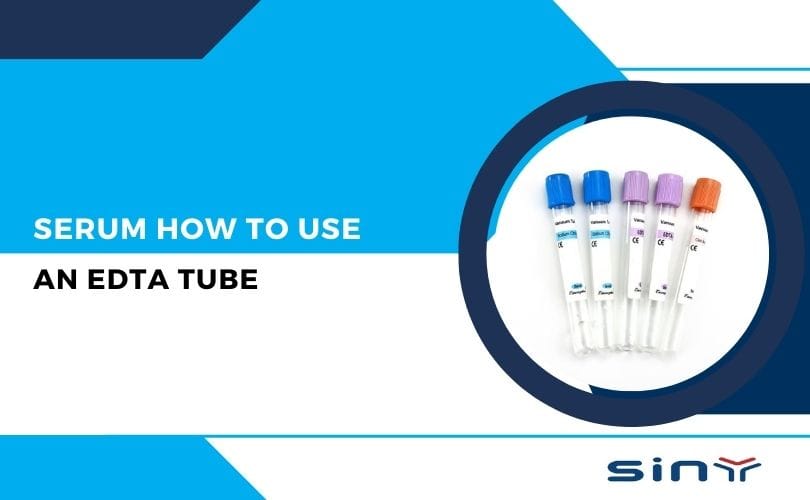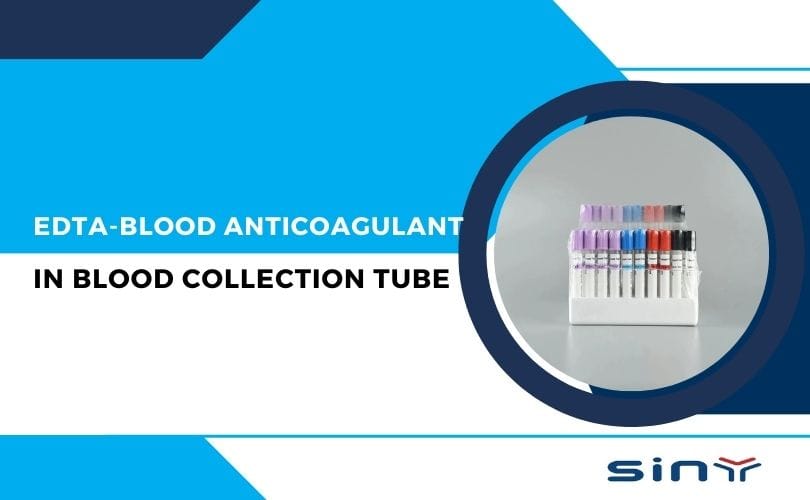Blood collection tubes are essential tools in medical diagnostics, and the choice of anticoagulant plays a critical role in ensuring accurate test results. Among the various anticoagulants used, EDTA (Ethylenediaminetetraacetic acid) stands out as one of the most widely utilized. Specifically, K2 EDTA and K3 EDTA are commonly used in blood collection tubes. But what is the purpose of using K2 or K3 EDTA in these tubes? This blog delves into the science behind EDTA, its applications, and why K2 and K3 EDTA are preferred in clinical and laboratory settings.
Understanding EDTA: A Versatile Anticoagulant
EDTA is a synthetic amino acid that binds calcium ions, preventing blood from clotting. This property makes it an ideal anticoagulant for blood collection tubes, especially for tests that require whole blood or plasma. EDTA works by chelating calcium ions, which are essential for the coagulation cascade. By removing calcium, EDTA ensures that blood remains in a liquid state, preserving the integrity of blood cells and plasma components.
EDTA is available in different forms, including K2 EDTA and K3 EDTA, which differ in their chemical composition and applications. Both forms are widely used, but they have specific advantages depending on the intended use. To learn more about the types of EDTA tubes available, visit our comprehensive guide on EDTA Tubes for Blood Collection.
K2 EDTA vs. K3 EDTA: What’s the Difference?
While both K2 EDTA and K3 EDTA serve the same primary function—preventing blood clotting—they differ in their chemical structure and performance characteristics. Here’s a detailed comparison:
K2 EDTA
- Chemical Composition: K2 EDTA contains dipotassium EDTA, which is highly effective in binding calcium ions.
- Advantages: K2 EDTA is preferred for its stability and minimal impact on blood cell morphology. It is widely used in hematology tests, such as complete blood count (CBC), because it preserves the shape and size of red blood cells, white blood cells, and platelets.
- Applications: Commonly used in lavender-top tubes for hematology testing. For more information, check out our K2 EDTA Tube.
K3 EDTA
- Chemical Composition: K3 EDTA contains tripotassium EDTA, which is also effective but slightly less stable than K2 EDTA.
- Advantages: K3 EDTA is often used in smaller-volume tubes due to its faster dissolution rate. However, it may cause slight shrinkage of red blood cells, which can affect certain hematology tests.
- Applications: Suitable for general-purpose blood collection, especially in pediatric or low-volume samples.
For a deeper dive into the uses of K2 and K3 EDTA tubes, explore our article on EDTA K2 K3 Tube Whole Blood Tube Uses.
Comparing K2 vs. K3 EDTA in Clinical Applications
| Feature | K2 EDTA | K3 EDTA |
|---|---|---|
| Form | Powder (spray-dried) | Liquid |
| Effect on Blood Sample | Minimal dilution | Slight dilution |
| Preferred For | Hematology, flow cytometry | Automated hematology analyzers |
| Cell Morphology | Better preservation | Slight cell shrinkage |
| Accuracy in CBC | Higher | Moderate |
| Common Tube Cap Color | Lavender/Purple | Lavender/Purple |
According to Siny Medical, most laboratories now prefer K2 EDTA because of its stability, accuracy, and minimal interference with testing results.
Why Use K2 or K3 EDTA in Blood Collection Tubes?
The use of K2 EDTA or K3 EDTA in blood collection tubes offers several key benefits:
- Prevents Clotting: By chelating calcium ions, EDTA ensures that blood remains in a liquid state, which is crucial for accurate laboratory testing.
- Preserves Cell Morphology: K2 EDTA, in particular, maintains the integrity of blood cells, making it ideal for hematology tests.
- Versatility: EDTA tubes are suitable for a wide range of tests, including CBC, blood typing, and molecular diagnostics.
- Stability: EDTA-treated samples remain stable for extended periods, allowing for delayed analysis if necessary.
- Compatibility: EDTA tubes are compatible with automated analyzers, streamlining laboratory workflows.
To understand the broader benefits of using EDTA tubes, read our article on the Top 5 Benefits of Using EDTA Tubes.
Choosing the Right EDTA Tube for Your Needs
Selecting the appropriate EDTA tube depends on the specific requirements of your laboratory or clinical setting. Here are some factors to consider:
- Test Type: For hematology tests, K2 EDTA is preferred due to its superior cell preservation properties.
- Sample Volume: K3 EDTA may be more suitable for smaller-volume samples, such as those from pediatric patients.
- Tube Size: Choose tubes with the appropriate volume to ensure accurate blood-to-anticoagulant ratios.
- Quality: Opt for high-quality tubes from reputable manufacturers to ensure reliable results.
For expert guidance on selecting the right EDTA tube, visit our guide on How to Choose the Right EDTA Tube for Your Lab.
Best Practices for Using EDTA Tubes
To maximize the effectiveness of EDTA tubes, follow these best practices:
- Proper Mixing: After blood collection, invert the tube gently several times to ensure thorough mixing of the blood and anticoagulant.
- Correct Volume: Fill the tube to the recommended volume to maintain the correct blood-to-anticoagulant ratio.
- Storage: Store EDTA tubes at the appropriate temperature and avoid prolonged exposure to light.
- Quality Control: Regularly monitor the performance of EDTA tubes to ensure consistent results.
For more tips on using EDTA tubes effectively, check out our article on Top Quality Control Tips for Using EDTA Tubes.
Advantages of Using EDTA in Blood Collection Tubes
Let’s dig deeper into why EDTA is the go-to anticoagulant in laboratories worldwide.
1. Prevents Clotting Efficiently
EDTA’s calcium-binding property keeps blood from clotting, maintaining its fluidity for extended periods.
2. Preserves Cellular Morphology
Blood cells retain their natural shape, making it ideal for morphological analysis and microscopic review.
3. Ensures Accurate Hematology Results
From red cell indices to white blood cell counts, EDTA tubes deliver highly reliable data.
4. Compatible with Automation
K2 EDTA tubes are designed to integrate seamlessly with automated analyzers, ensuring consistency and ease of processing.
5. Long Shelf Life and Stability
When stored properly, EDTA-treated samples can remain stable for up to 24 hours at room temperature.
You can explore more detailed insights on these benefits at Top 5 Benefits of Using EDTA Tubes
EDTA Tube Manufacturers
If you’re sourcing reliable and certified EDTA tubes, EDTA Tube and Siny Medical are leading manufacturers ensuring precision, sterility, and compliance with global standards.
Their products include a full range of K2 and K3 EDTA tubes, available in different sizes and configurations. You can learn more about the company here or reach out through their Contact Page.
You can also check out product tutorials and demonstrations on their YouTube Channel
Final Thoughts
In short, EDTA in blood collection tubes plays a pivotal role in preserving blood integrity and ensuring accurate diagnostic results. Whether you choose K2 or K3 EDTA, both serve as reliable anticoagulants that maintain the morphological and chemical balance of the blood sample.
For laboratories prioritizing precision and reproducibility, using high-quality EDTA tubes from trusted suppliers like EDTA Tube is a must.
FAQs
1. What does EDTA stand for?
EDTA stands for Ethylenediaminetetraacetic Acid, a chemical that binds calcium and prevents blood clotting.
2. What is the difference between K2 and K3 EDTA?
K2 EDTA is a dipotassium salt, usually in powder form, while K3 EDTA is tripotassium, often in liquid form. K2 is preferred for accuracy and cell morphology preservation.
3. Why is EDTA used in lavender-top tubes?
Lavender-top tubes contain EDTA as an anticoagulant, mainly used for hematology tests like CBC.
4. Can EDTA tubes be used for chemistry tests?
No, EDTA can interfere with some biochemical reactions. It’s best used for hematological and molecular tests.
5. How long is blood stable in an EDTA tube?
Typically, up to 24 hours at room temperature, though refrigeration can extend stability slightly.

